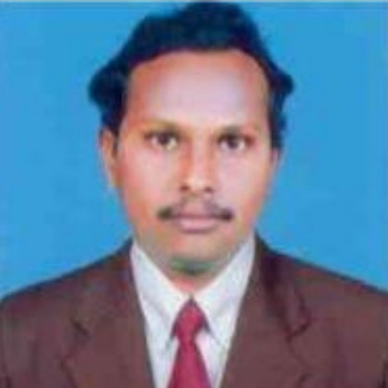
D. Satya Narayana
Work place: Department of ECE, R.G.M.C.E.T, Nandyal, Andhra Pradesh, India
E-mail: dsn2003@Rediffmail.com
Website:
Research Interests: Engineering, Computational Engineering, Computational Science and Engineering
Biography
Dr. D. Satyanarayana, Professor in Electronics & Communication Engineering, having 18 years teaching experience, has been graduate d from Bharatiar University, Coimbatore in the faculty of Electronics & Communication Engineering in 1992. Later he has obtained his Master's Degree in Digital Systems and Computer Electronics from Jawaharlal Nehru Technology University, Hyderabad in the year 1998. He was awarded a Doctorate for his work in Signal Processing by J.N.T. University, Hyderabad in the year 2009. At present he is heading the department of ECE at RGMEC. He is very actively involved in Research work and presented 10 Research papers on different topics in the field of Electronics. He is a member of Professional societies like ISTE (India), IETE (India) and IEEE. In his total Endeavour as a teacher, he is known for his friendliness with the students and his colleagues. He is a man of simplicity, sincerity and hard working.
Author Articles
OTSU's Thresholding with Back Projection Modeling for Neural Network Data Sets
By S.Asif Hussain D. Satya Narayana M.N. Giri Prasad
DOI: https://doi.org/10.5815/ijigsp.2014.07.07, Pub. Date: 8 Jun. 2014
For Tracking interfaces and shapes which depends on the regions of pixel intensity is a challenging task in image segmentation. Many level set methods have been formulated for region based and edge based models in computer aided diagnosis systems. In order to provide accurate modeling involving numerical computations, contours, lesions and bias variance which often rely on pixel intensity variations for the region of Interest. The proposed method involves the formulation by deriving a global criterion function in terms of neighborhood pixels to represent domain field and bias variance characteristics. Gaussian impulse is used for smoothening sharp edges. Computational neural networks provide the integral part of most learning algorithms as images consists of redundant attributes of data which have redundant network connections with different input patterns of small weights form a network training process for minimizing the energy and to estimate the bias field correction for various imaging modalities. The PET and CT images are used as inputs which are affected with cancer; in order to extract the features, proposed method is used for easy diagnosis. The result shows the improved performance with Neural Networks and provides valuable diagnostic information.
[...] Read more.Other Articles
Subscribe to receive issue release notifications and newsletters from MECS Press journals